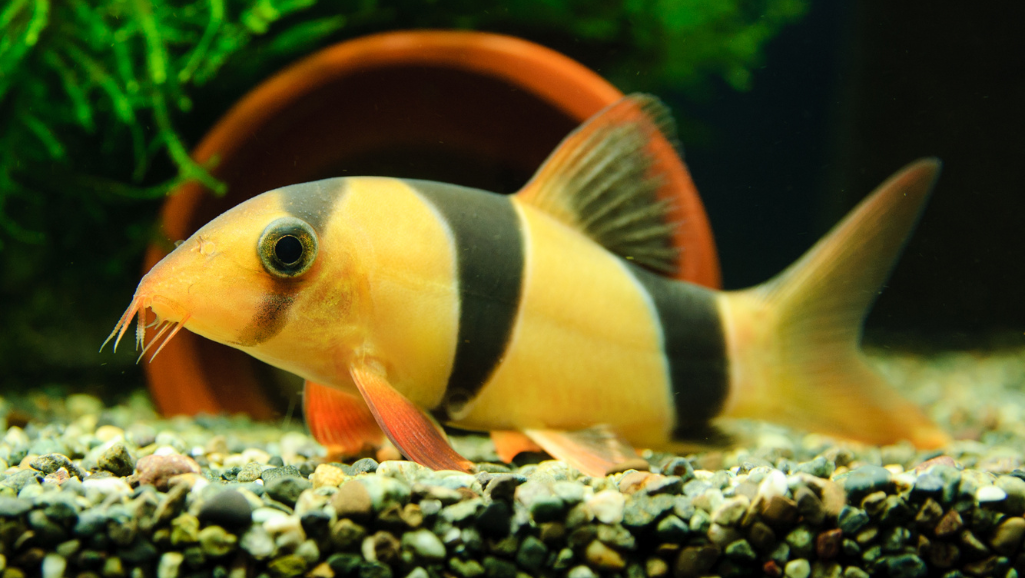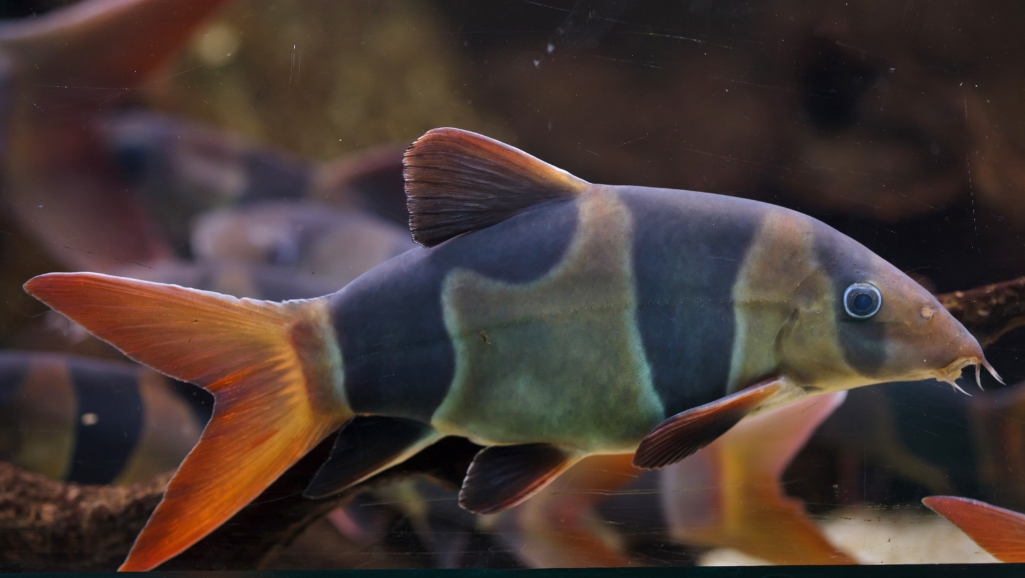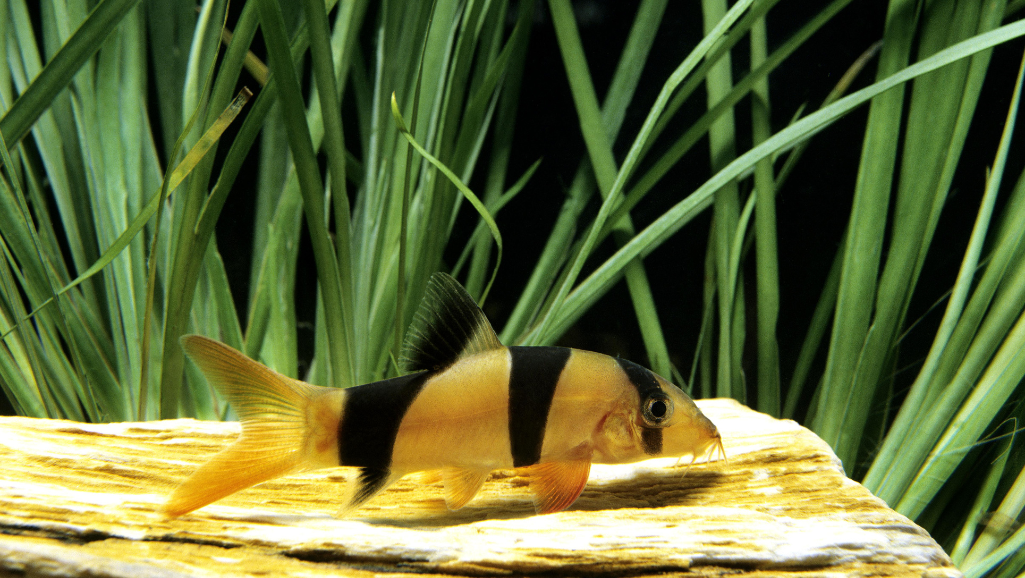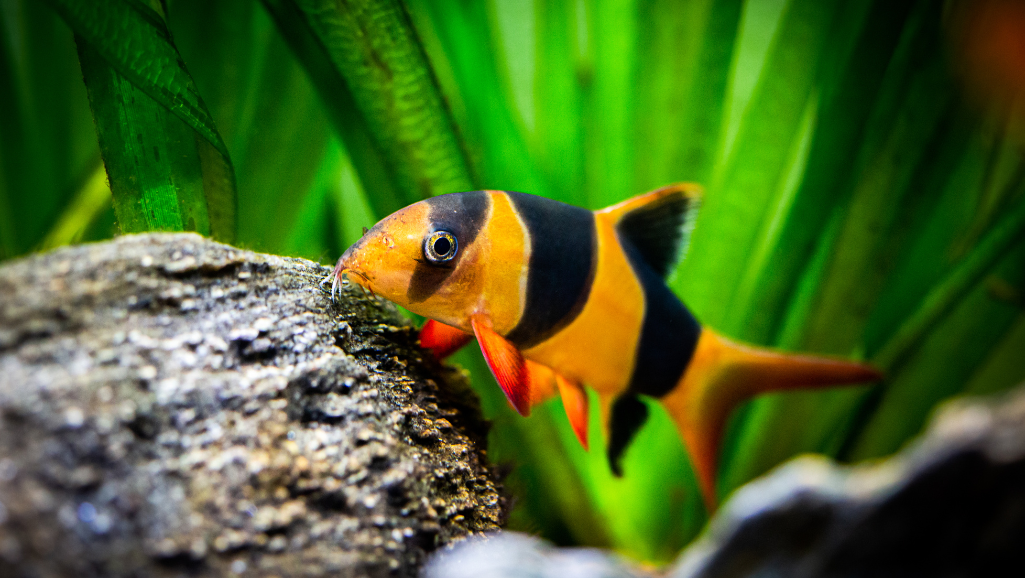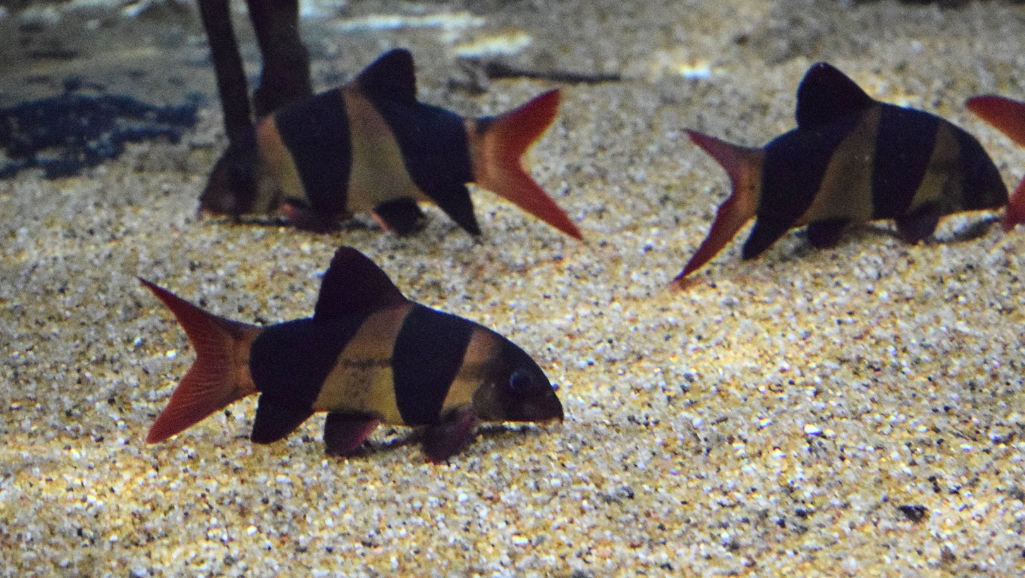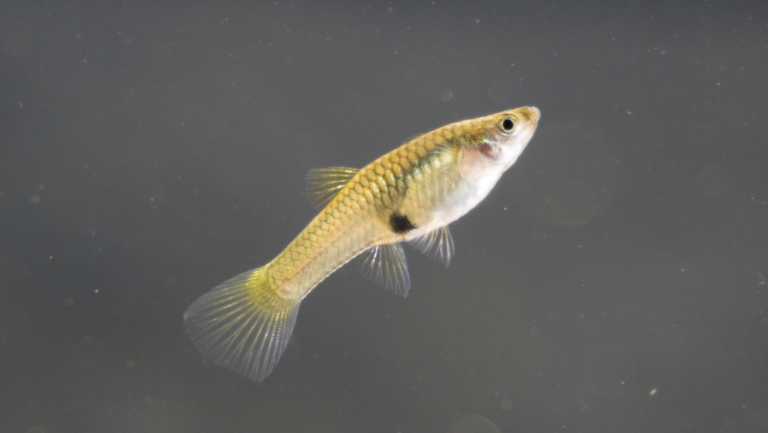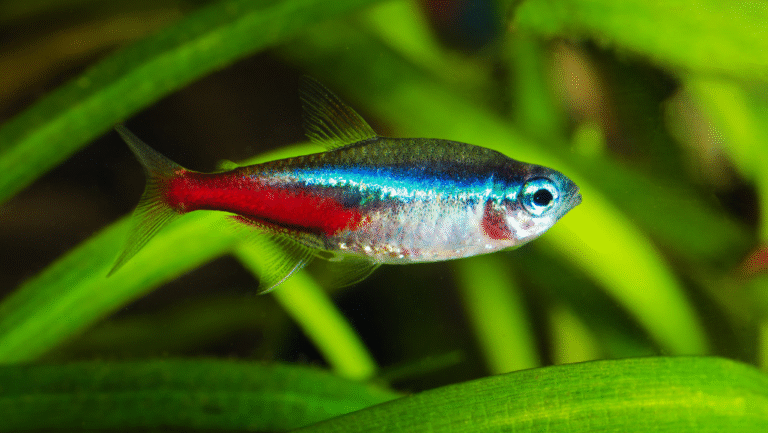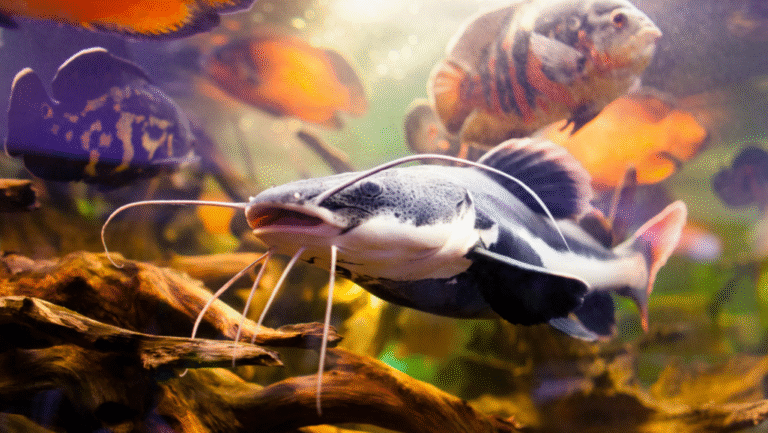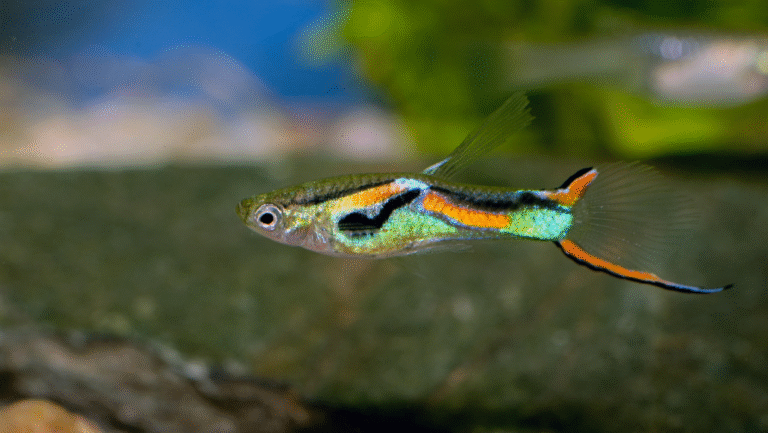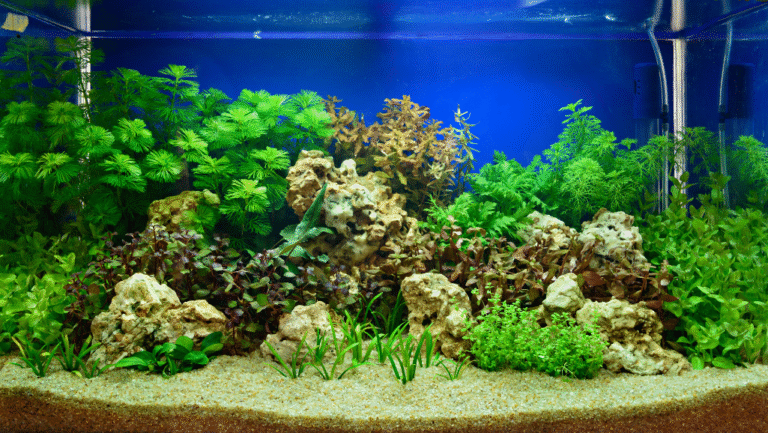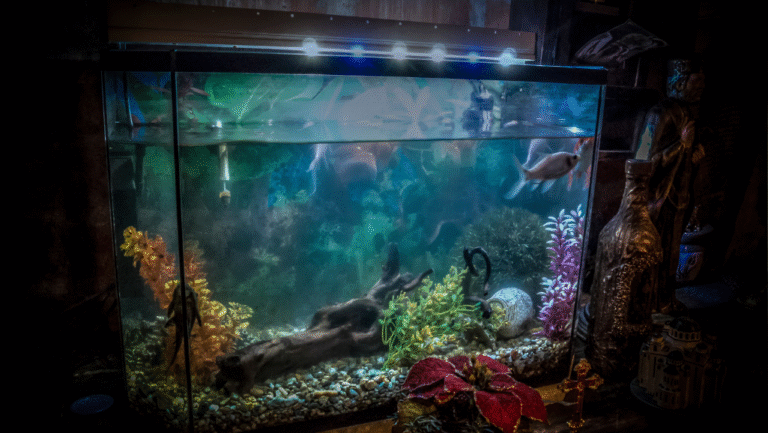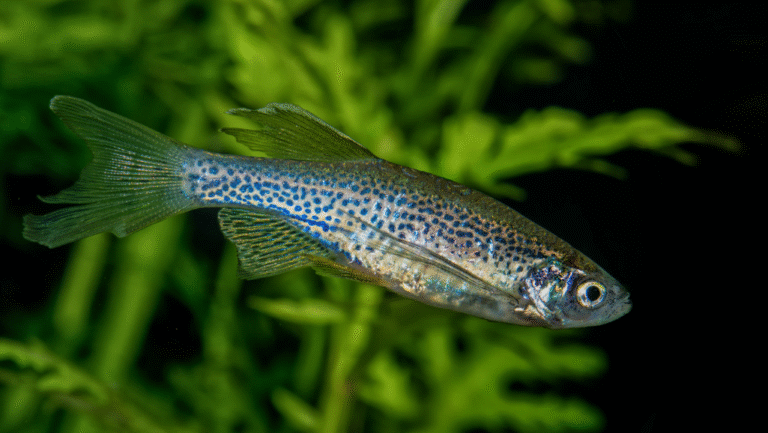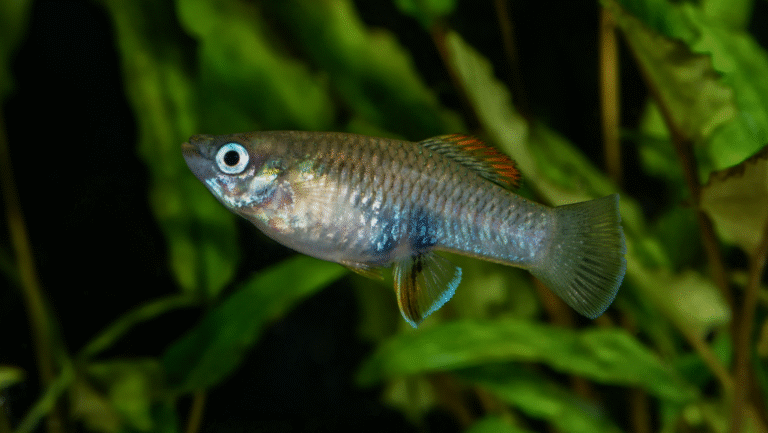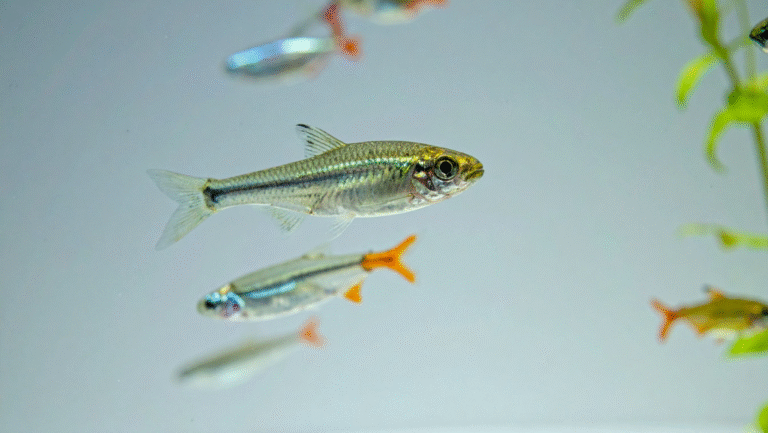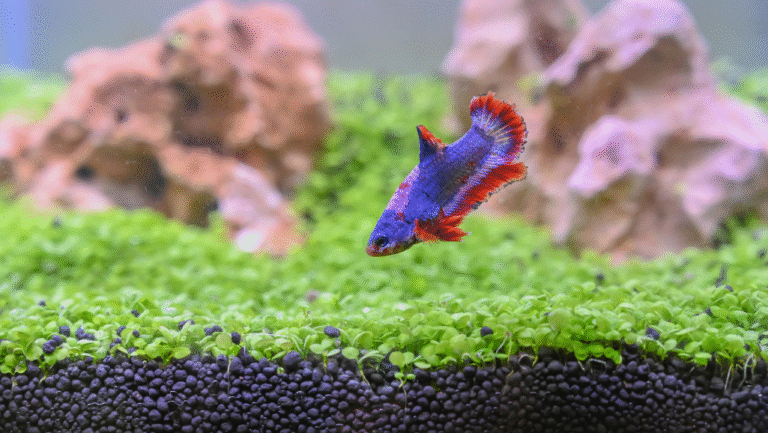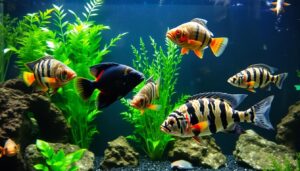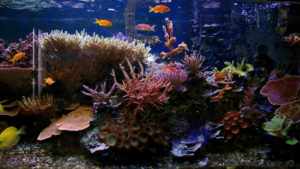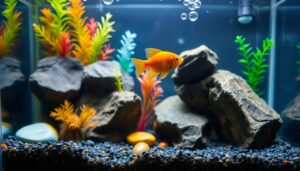Meet Chromobotia macracanthus, a striking bottom-dwelling species that brings bold stripes and red-orange fins to the aquarium. This charismatic fish is beloved by hobbyists who truly love fish and enjoy lively community tanks.
Adults reach about 12–13 inches, so planning for long-term size and space is essential. They belong to the Botiidae family and are the sole member of their genus, which makes them a special addition for keepers who value accurate information and stewardship.
Expect playful behaviors: clicking sounds, synchronized chases, and the odd side-lying rest that can alarm new owners. These crepuscular loaches show peak activity at dawn and dusk, offering the best viewing during those times.
Key Takeaways
- The Clown Loach.
- Chromobotia macracanthus is a vivid, large freshwater species with three dark stripes and red-orange fins.
- Plan for adult size—about 12–13 inches—and robust aquarium space.
- They are crepuscular and most active at dawn and dusk.
- Watch for signature traits like barbels and retractable eye spikes when handling.
- Popular and interactive, they reward committed stewards with years of enjoyment.
Start Here: Your How-To Roadmap to a Thriving Clown Loach Aquarium
Begin with stable water, warm temps, and hiding places to speed acclimation. This short guide gives practical, present-day information you can use right away.
What you’ll learn in this guide:
- How to maintain steady 82–86°F water and prevent temperature shocks.
- Quarantine steps to catch ich early and when to use Ich‑X or aquarium salt.
- Simple aquascape tips—plants, caves, and tannin sources like Indian almond leaves—that reduce stress.
Quick-start checklist:
- Tank: a 55‑gallon minimum for juveniles, plan upgrades as they grow into larger tanks.
- Community: add dither fish (rainbowfish, Congo tetras, tiger barbs) to help shy loaches emerge.
- Supplies: reliable heaters plus a backup, robust filtration, test kits, sinking pellets and frozen worms, and Indian almond leaves.
Clown Loach Care and Behavior
Recognizing this species starts with the unmistakable three black bands and bright orange-yellow body. Look closely for red-orange fins, barbels at the mouth, and the discreet retractable eye spines under each eye.
Behavior is part of their charm. Soft clicking often marks playful sparring or a pecking-order debate. They may rest on their sides or appear upside down; this theatrics is usually harmless when water quality is steady.
Group dynamics and daily rhythm
These fish are crepuscular: most activity happens at dawn and dusk. A larger group—six or more—encourages exploration and reduces hiding. School hierarchies form naturally and are often led by a dominant female.
Community compatibility and safety
They thrive with outgoing, midwater dithers such as rainbowfish, Congo tetras, or tiger barbs, which help the group feel safe. Avoid very small tank mates and protect prized snails; these loaches may also snack on small invertebrates.
“Stable water, roomy hiding places, and a confident group make these fish lively, social stars of the aquarium.”
- ID tip: three bold stripes, red-orange fins, and barbels.
- Handle with care: eye spikes can extend—use soft nets.
- Watch: minor scuffs after sparring are normal; persistent aggression signals crowding or stress.
How to Set Up the Tank and Water for Loaches That Flourish
A thoughtfully arranged aquarium gives these active bottom-dwellers room to grow and show off their stripes.
Space matters
Start with a 55-gallon tank for juveniles and plan upgrades as they near about 6 inches or roughly three years of age.
Adults can reach 12–13 inches, so map size milestones now and avoid last-minute moves that stress fish.
Heat and stability
Keep water steady at 82–86°F and target pH 6.0–7.5 with moderate hardness (5–13 dGH).
Use a reliable heater plus a backup, accurate thermometer, and consider battery air pumps for power outages.
Aquascape with purpose
Choose a soft, sandy bottom and rounded decor to protect barbels. Add driftwood, caves, and plenty of hiding places.
Live plants and gentle flow give cover and oxygen without blasting resting spots.
Lighting, tannins, and quarantine
Dimmer cycles and Indian almond leaves add tannins that calm color and behavior. Test kits and routine siphoning keep the setup predictable.
“Quarantine new arrivals: observe feeding, treat ich early with Ich‑X or salt, and never rush a transfer.”
- Keep an upgrade plan; track size and tank capacity over time.
- Stock basic aquarium supplies: spare heater, thermometer, and filter media.
- Isolate newcomers to prevent parasites from reaching your display.
Feeding the Bottom Stars: Diet, Snail Control, and Daily Care
Feed time is one of the best chances to watch behavior, assess health, and tweak diet for your bottom dwellers. Keep meals simple, frequent, and focused on protein to match warm-water metabolism.
Protein-forward menu
Lead with sinking pellets and frozen or fresh protein: bloodworms, tubifex, and mollusks give essential amino acids. Rotate in Repashy gel foods and blanched zucchini to support gut health and add fiber.
Feeding rhythm and portions
Higher temperatures speed metabolism. Offer small, frequent portions during the day so each fish eats without competition.
Choose foods that sink quickly so bottom feeders get first dibs. Watch bellies and behavior to adjust serving sizes.
Clean-water routine and snail control
Use strong filtration and moderate flow to keep detritus low and fins bright. Pre-rinse frozen foods and rotate offerings to reduce waste.
These loaches eat pest snails readily, making them a natural control. Do not house prized snails with this group.
“Their lively meal ‘dance’ is a useful health check—use feeding times to spot issues early.”
- Keep a feeding log to note what each fish prefers.
- Stock supplies: quality pellets, frozen food trays, tongs, and a spare sponge filter.
- Add live plants and shaded zones so shy individuals can forage confidently.
Breeding, Growth, and Long-Term Planning
Breeding attempts work best when you mimic rainy-season changes and monitor mature adults. Expect subtle sexing signs: slimmer, brighter-finned males versus broader, duller-finned females. Verify sex over months as bodies fill out with age.
Sexing and seasonal cues
Maturity matters: many reports show adults older than three years and over four inches produce larger clutches. Farms typically condition fish at ~82°F, pH ~7.5, then drop to ~78°F and pH ~6.2 to trigger spawning.
Reality check and fry care
Eggs are scattered and receive no parental care. Use fine-leaved plants or spawning grids and remove adults promptly to save eggs.
“Captive breeding is rare; most retail stock is wild-caught and captive-bred lines are usually pricier.”
- Have fry foods ready: live baby brine shrimp and microworms are ideal starters.
- Plan tank upgrades—these fish reach large sizes and need robust filtration and space.
- Keep backup supplies (heaters, air pumps, extra media) during any breeding effort.
For more practical husbandry and sourcing information, see this care and breeding guide.
Conclusion
Small, steady improvements to water and hiding places yield big rewards in behavior and color. Keep temperature steady in the 82–86°F range, quarantine new arrivals, and plan tank upgrades by size so growth stays comfortable.
Feed with intention: offer varied, protein-forward sinking foods and monitor how the bottom of the aquarium responds. Good filtration, dimmer lighting, tannins from leaves, and plenty of caves help shy individuals become part of a confident school.
Choose compatible community mates and keep a checklist of supplies for quick fixes. With consistent care and the right setup, clown loaches and other loaches become lively, long-lived members of your freshwater tank that reward the time you invest.
